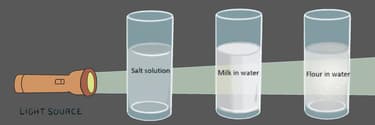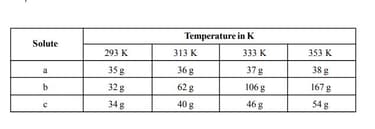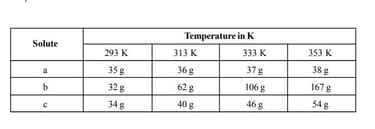Exercise
NCERT Science Solutions for Exercise
Simple step-by-step solutions to Exercise questions of Tissues from Science Textbook of Competency Based Questions for Class IX. Also get 3D topic explainers, cheat sheets, and unlimited doubts solving on EMBIBE.
Questions from Exercise with Hints & Solutions
Tiana and Prasanna were playing at home. Prasanna was playing PUBG and Tiana was doing puzzles. Mom called both of them and gave a cup of ice cream to each of them. Tiana immediately started eating ice cream, but Prasanna was playing PUBG. After some time, Tiana saw Prasanna's cup of ice cream. She observed that the ice cream started melting and also noticed that in that cup, ice cream was present in two forms, such as in liquid form and solid form. Ignoring him, she again started eating ice cream. After completing eating ice cream, she observed that all the ice cream present in Prasanna's bowl got converted into liquid. So she called Mom and told her about this thing. Then Mom took that bowl and kept it in the freezer. After some time, Mom took the ice cream bowl from the fridge and gave it to Prasanna. But the thing Tiana noticed is that liquid ice again got converted into a solid. So, she asked her Mom why ice cream changed to a liquid state when she kept it in the room, but when she kept it in the fridge again, it converted to solid. Is there any reason behind it? Then Mom said yes, substances change their state in different temperatures, so the same thing happened with the ice cream also.

Now, can you answer the below question?
When ice cream is kept in a room for some time, it changes to a liquid state. When this liquid ice cream is kept in the freezer again, it is converted into a solid. The below graph shows how the temperature of the ice cream changes with time.

In which region of the graph both the liquid and the solid are present?
Seema took three solids, , , and and made their saturated solutions in water at different temperatures. The amounts of , and used to form a saturated solution in water at different temperatures. The amounts of , , and used to form saturated solutions are shown in the table:
What will happen to a saturated solution if more solute is added at the same temperature?
Colour changes observed during the reaction between metal oxides and hydrogen are given below:
(1) white bluish white
(2) brown grey
(3) yellow grey
(4) black red
Arrange the above colour changes as to , to , to and to .
If all parts of a mixture show the same properties, what kind of mixture is it? Explain your answer.
Sort the following into homogeneous and heterogeneous mixture:
Cereal in milk, blood, salt and water, air, smog, rain, soil, orange juice, sand and water, lemonade, fruit salad, cookies and carbonated water.
What fraction of the total is the homogenous mixture and the heterogeneous mixture? Find the ratio of homogeneous mixture to the heterogeneous mixture.
Salt and sugar in powdered form are mixed together uniformly to form a mixture. Do you think, this mixture will form a different compound due to change in their respective molecule?
Seema took three solids, , , and and made their saturated solutions in water at different temperatures. The amounts of , and used to form a saturated solution in water at different temperatures. The amounts of , , and used to form saturated solutions are shown in the table:
Which of the following is a possible amount of in the saturated solution at ?
Raju's teacher gave him three distinct substances: common salt, milk, and flour, and he was asked to mix these substances with water. Now help Raju to figure out the kind of mixture formed in each case. Also help him identify the mixture which shows Tyndall effect in the presence of a light source.



